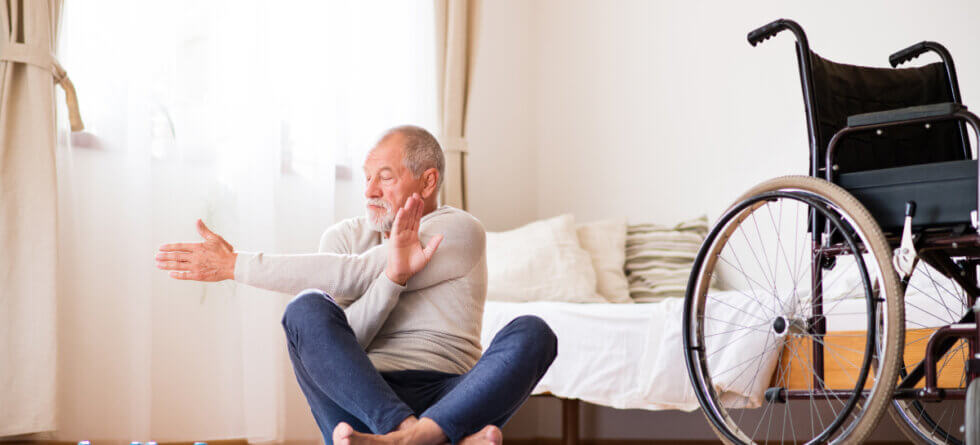As we age, the importance of maintaining mobility cannot be overstated. Being mobile enhances the quality of life for seniors, offering greater independence, improved mental health, and a host of physical benefits. This article provides practical advice for seniors looking to stay active and mobile in their golden years.
Understanding Mobility in Seniors
Mobility is the ability to move freely and easily. For seniors, maintaining mobility involves more than just physical movement; it is the key to accessing social interactions, carrying out daily tasks, and engaging in self-care. As such, it’s crucial for seniors to focus on maintaining their mobility to enjoy a fulfilling lifestyle.
Engaging in Regular Physical Activity
One of the most effective methods for preserving mobility is regular exercise. Activities such as walking, swimming, or practicing tai chi can keep the muscles strong, improve balance, and enhance flexibility. Seniors should aim for at least 150 minutes of moderate aerobic activity per week, as recommended by health authorities.
Prioritizing Strength and Balance Training
Strength training helps build muscle, which in turn supports joints and improves balance. Balance exercises reduce the risk of falls, a significant concern for seniors. These exercises can be done at home with minimal equipment, like using a sturdy chair for support when performing leg lifts or practicing yoga.
Incorporating Flexibility Routines
Maintaining flexibility is crucial for seniors. Simple stretching exercises can be performed daily to keep muscles limber and joints fluid. Movements like arm stretches, seated toe touches, and neck rotations are beneficial and can be done at any time of the day.
Emphasizing Proper Nutrition
Good nutrition is essential for maintaining muscle mass and bone strength. A diet rich in calcium, vitamin D, and protein supports mobility by promoting bone health and muscle repair. Seniors should eat a variety of fruits, vegetables, lean proteins, and whole grains while staying hydrated throughout the day.
Staying Hydrated
Proper hydration is vital for general health and can impact mobility. Dehydration can lead to dizziness, muscle cramps, and fatigue, impairing one’s ability to move safely. Seniors should drink plenty of water and limit caffeine and alcohol intake, which can contribute to dehydration.
Investing in Supportive Footwear
Shoes play a significant role in mobility. Comfortable, supportive footwear that fits correctly can prevent falls and foot pain. Shoes with non-slip soles, adequate cushioning, and good arch support are ideal. It’s also wise to avoid high heels and shoes with slick soles.
Using Mobility Aids When Necessary
Mobility aids such as walking sticks, canes, and walkers can be instrumental for seniors who require additional support. These aids can provide stability and confidence when moving around. It’s important to use them correctly, and ideally, under the guidance of a physical therapist.
Regular Health Check-ups
Regular check-ups with healthcare providers can help detect issues before they become major obstacles to mobility. This includes vision and hearing tests, as they play a critical role in balance and spatial awareness. Healthcare providers can also offer personalized advice on maintaining mobility.
Creating a Safe Home Environment
A safe home environment is key to preventing falls and promoting mobility. Seniors should ensure that their living space is free of tripping hazards like loose rugs or cluttered walkways. Adequate lighting, handrails in bathrooms, and non-slip mats can also make a home safer for moving around.
Getting Enough Sleep
Quality sleep is essential for physical health and mobility. During sleep, the body repairs tissue and muscles, which is crucial for movement. Seniors should aim for 7-9 hours of sleep per night and have a consistent sleep schedule to promote restorative rest.
Managing Chronic Conditions
Chronic conditions such as arthritis, diabetes, or heart disease can impact mobility. Proper management of these conditions through medication, therapy, and lifestyle changes is critical. Seniors should work closely with their healthcare providers to create an effective management plan.
Participating in Social Activities
Socialization can actually support mobility. Engaging in group activities, like dance classes or community gardening, encourages movement and contributes to overall well-being. Social connections can also provide emotional support and motivation to stay active.
Limiting Sedentary Behavior
Long periods of sitting can lead to muscle stiffness and reduced mobility. Seniors should take breaks from sitting by standing up, stretching, or walking for a few minutes every hour. This habit can improve circulation and keep the joints from becoming stiff.
Embracing a Positive Mindset
A positive mindset can significantly contribute to achieving goals related to mobility. Seniors should set realistic goals, celebrate progress, and maintain a positive outlook on their ability to stay active.
Conclusion
Mobility is a vital component of independent living and overall wellness for seniors. By taking proactive steps to stay active, maintaining good nutrition and hydration, and creating a safe environment, seniors can enhance their ability to move freely and live life to the fullest. Regular exercise, proper health management, and engagement in social activities not only improve physical health but also boost mental well-being. In addition to embracing these tips, it’s also essential for seniors to remain open to using mobility aids and making adjustments as needed to accommodate their changing abilities. With dedication and the right strategies, mobility can be preserved, allowing seniors to thrive in their golden years.



